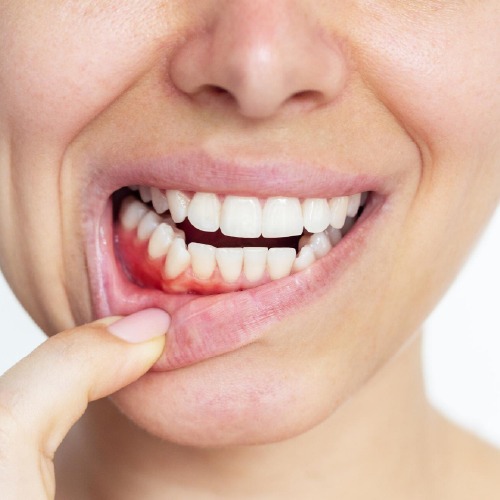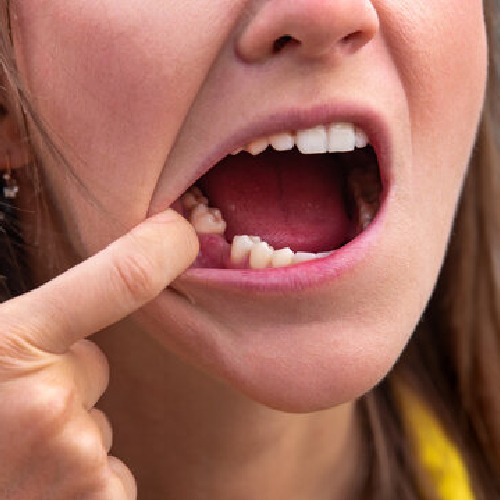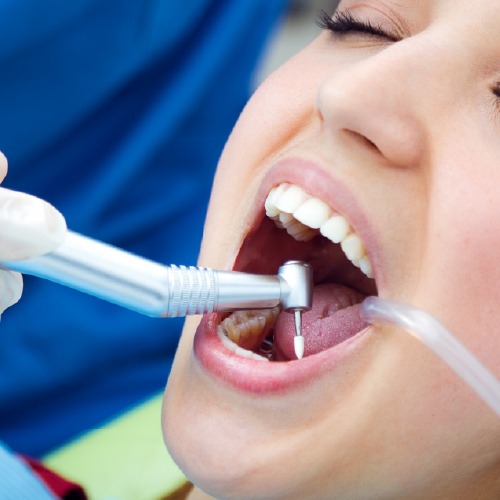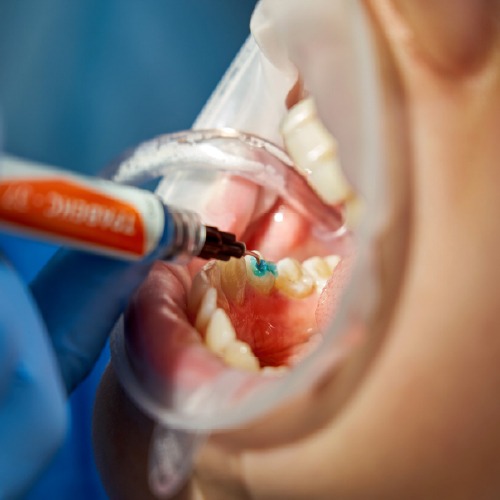Have you noticed your gums pulling back, exposing more of your teeth than before? That’s not just a cosmetic issue; it’s a sign your gum health needs attention. And here you are – if you are reading this, it’s very likely that you have already become concerned with the changes that you have noticed in the mirror. Whether your dentist mentioned a gum graft is necessary or you are just exploring the possibilities, let’s go through everything in a clear, simple way and without any frightening medical words.
Gum graft surgery might sound intimidating, but it’s actually one of the most effective ways to restore receding gums and protect your teeth from further damage. This procedure involves taking healthy gum tissue (usually from the roof of your mouth or a donor source) and placing it where your gums have receded. Why? Because your gums are more than just a pink frame for your smile, they act as a barrier that protects your teeth from bacteria, decay, and sensitivity.
In this article, we are going to take you through all the necessary aspects of gum recession, the ways a gum graft helps, the early signs you shouldn’t ignore, other treatment methods, such as laser therapy, and also the experience of recovery. Are you prepared? Here we go.
Spotting the Problem Early: Early Gum Recession Symptoms
Receding gums are definitely not the result of one day only. The process is gradual, deceitful, and mostly unnoticed by most people until they feel their teeth are more sensitive or they realize that their smile looks ‘longer.’ However, recognizing the problem early can help you avoid many problems and expenses later for a gum graft.
Early gum recession symptoms include:
- You feel sensitivity to hot, cold, or even air
- You see little dips or notches near your gum line
- Your teeth look longer than they used to
- Occasional bleeding after brushing or flossing
- A general feeling of discomfort or tightness in your gums
If you’re nodding your head right now, you’re not alone. These are your gums waving a little red flag saying, “Hey, I need some help!” And that help might come in the form of a gum graft. And if left untreated, gum recession can lead to bone loss, loose teeth, and even tooth loss.
This is exactly where a gum graft can help. It stops the progression of recession, strengthens your gum line, and can even reduce sensitivity. But first! you have to catch it in time.
What Causes Gum Recession in the First Place?
So now you might be wondering, why is this even happening to me? There are a bunch of reasons gums can recede:
- Brushing too hard, yep, you can actually brush your gums away.
- Poor oral hygiene, plaque, and tartar can damage your gums over time.
- Genetics: if your family has gum issues, you might too.
- Hormonal changes, pregnancy, menopause, and even stress can impact your gums.
- Grinding or clenching your teeth adds pressure that can wear down.
- Tobacco use, smoking messes with gum health big time.
Whatever the cause, the important thing is that you’re catching it and taking care of it now. And a gum graft can still help repair the damage and protect your teeth.

Exploring the New Wave: Laser for Gum Recession
If you’ve been doing some Googling, which clearly you have, you might’ve come across something called laser for gum recession. And yes, it’s a real thing, and yes, it sounds kind of futuristic. So, is it better than a traditional gum graft?
Here’s the deal, Technology in dentistry is changing the game! Laser treatment for gum recession is less invasive than surgery. It uses a precise beam to remove bad bacteria and inflamed tissue, helping the gums heal. It’s great for mild cases or early stages. But if your gums have receded a lot, lasers probably won’t be enough on their own.
Sometimes dentists use lasers to clean up the area before doing a graft or to help things heal faster afterward. So while it’s a cool tool, not all cases are right for laser therapy; it’s not always the main solution. In most moderate to severe cases, a gum graft is still the gold standard as the best long-term solution.
The Journey to Healing: Gum Graft Recovery
Okay, let’s be real. Surgery, even dental surgery, can sound scary. But gum graft recovery is honestly not that bad.
Here’s what most people experience:
- Day 1 to 2, some soreness, maybe a little swelling. Most people say it feels more like a scraped knee than sharp pain.
- Week 1, you’ll probably go back in for a quick check-up and maybe to remove stitches.
- Week 2 to 3, you’re eating soft foods, skipping chips and crunchy stuff, and letting your mouth do its thing.
- 1 month, you’re back to normal. Gums look better, feel better, and you’re glad you did it.
During gum graft recovery, your dentist will give you a list of dos and don’ts. Like, don’t brush right on the area, use a special mouthwash, and stick to soft foods. Mashed potatoes, smoothies, scrambled eggs, this is your moment to eat like a kid again. You’ll also want to avoid hot, spicy, or crunchy stuff for a bit.
The good news? Most patients say the results are worth every bit of the temporary discomfort. Your gums will be stronger, your teeth better protected, and your smile more balanced.
Types of Gum Grafts: Which One Do You Need?
In accordance with the specifics of your dental problem, your dentist might recommend one of the following types of gum graft procedures:
- Connective tissue graft – It is the most frequent procedure. The tissue is taken from the roof of your mouth and pushed under the gum to cover the roots that are exposed.
- Free gingival graft – The tissue is also taken from the roof of the mouth but it is directly placed on the gums. It is most suitable for patients who have thin gums.
- Pedicle graft – Instead of harvesting from the roof of the mouth, it takes the gum tissue from nearby the place of the graft.
Each procedure has its positive and negative sides. However, your dentist will guide you to the right choice that suits your condition. All the techniques are meant for one goal: to regenerate your gum line and to maintain your oral health.
How to Prevent Gum Recession After a Gum Graft
Once you’ve had a gum graft, you’ll want to protect your new gums for the long haul. The good news? It’s not complicated. Just a few simple changes can keep your smile strong:
- Use a soft-bristle toothbrush
- Be gentle when you brush, no need to scrub like you’re cleaning grout
- Floss daily, but gently
- Get your cleanings and checkups every 6 months
- Wear a nightguard if you grind your teeth
- Quit smoking if you haven’t already
- Eat a healthy diet that supports gum health, hello, leafy greens and vitamin C
These habits can make a huge difference and help your graft last for years.
Bonus Tips for a Smooth Gum Graft Recovery
Recovery could have been a lot easier, and by following some extra tips, you’d still be comfortable and you might even hasten the process.
For several days at night, raise your head with a pillow. The idea is to promote better drainage of the interstitial fluid, which leads to less swelling.
- Eat only foods that are at room temperature. Foods should not be too hot or too cold.
- Drinking through a straw is not a good idea; it can disturb the graft site.
- Puffing or vaping is definitely out while the healing is going on. It will make your recovery slower.
- Carry on with antibiotics or any other medicines that the dentist has prescribed for you.
If you feel that something is wrong with the excessive bleeding, pain that doesn’t get any better, or the swelling has increased suddenly, don’t hesitate to call your doctor. It’s always better to check in early and be safe.
Final Thoughts: Why a Gum Graft is Worth It
Let’s wrap it up. If you’re seeing early gum recession symptoms, don’t ignore them. Catching gum recession early can make all the difference and save you from more serious problems later on.
A gum graft may seem like a major procedure, but it is really just a straightforward and highly efficient method to secure your teeth and maintain your smile in a natural and healthy condition. In case you are only detecting a few symptoms of gum loss or the situation has already become a bit more serious, it is always a good moment to take action.
Curious about laser for gum recession? It’s a great option for certain cases, but for a deeper recession, a gum graft is usually the better call. And don’t worry, gum graft recovery is easier than you think. Most people are back to normal in just a couple of weeks.
At the end of the day, your smile matters. So if your gums are trying to tell you something, listen. Book a consultation, ask questions, and find the treatment that works for you. Because strong, healthy gums aren’t just about how your smile looks, they’re about keeping your teeth for life.
References:
https://my.clevelandclinic.org/health/treatments/23504-gum-graft-surgery?utm



